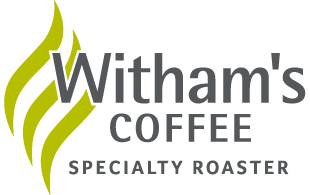This article has been shared from BeanScene Magazine May 2013.
Flexibility and ease are the main reasons I enjoy this brewing method. The Hario V60 pour over is so versatile that you can fit it in hand luggage, take it on a road trip and each time – with the use of a few simple tricks and tools – you can achieve a delicious result. This method of filtering has become very popular for people to make at home because the materials are not too expensive and you will consistently get a clean coffee thanks to the cone filter.
What you will need:
- Hario V60 paper filters
- Hario V60 pour over cone
- Cup
- Timer
- Scales (Hario scales have a timer set in)
- Kettle
- Hot plate
- Spoon
Steps:
- Step 1 Assemble the Harvio V60 pour over on the scales with the paper filter resting inside the V60. Boil your water on the hot plate.
- Step 2 When the water is at boiling temperature, pour the water into the paper filter. Pour until the filter is too hot to touch. This process removes the paper taste from the paper filter and helps heat the ceramic cone.
- Step 3 The pour over unit needs to be as hot as the water you’re using to brew, otherwise it will suck up all of the heat energy out of the pour over. Once the cone is rinsed, tip out the water.
- Step 4 Heat some water again until it reaches 99°C, just under boiling. Using a scale, add 15 grams of lightly roasted coffee into the cone. When the water is still boiling set your timer and scales to zero.
- Step 5 Start the timer as soon as the water hits the coffee. Pour in 30 grams of water. This is called the bloom, the initial contact between the coffee and the water, where you pour in twice the amount of water by weight as there is coffee.
- Step 6 Stir the coffee quite aggressively. This ensures all the coffee participles are wet at the same time for an even extraction. Let this sit for 30 seconds. This will soak into the coffee and make it soluble.
- Step 7 At 30 seconds, pour an additional 70 grams of water onto the coffee bed. As you pour the water, create a spiral movement, pouring into the centre of the cone then move around the outside edges.
- Step 8 This washes any remaining coffee grinds sitting in the cone back down into the brew.
- Step 9 At 1 minute, pour 75 grams of water into the cone, using the same spiral motion in step 5. Every time you stop pouring, put the kettle back on the hot plate so that it stays hot.
- Step 10 At 1 minute 30, pour in the final 75 grams of water to complete a total 250 grams of water into the coffee. Use the same pouring motion as step 5.
- Step 11 At 2 minutes 30, the brew should be finished as the water will have passed all the way through the coffee bed. When there are no more drips coming through the filter, the brew is complete.
- Step 12 The Hario V60 pour over is complete and ready to drink. Enjoy!
A good grinder is the number one thing to a successful pour over. Good coffee goes without saying. Lightly roasted coffee is best for filter methods. Central American or African beans generally taste better with filter coffees. Make sure you use well-filtered, soft water – not mineral water out of a bottle. Tap water that has been filtered with a carbon filter is ideal. The temperature of the water is really crucial. The water in your vessel must be 99 °C – if it’s not violently boiling right before you take the kettle off the heat, it’s no good and the end result will be a sour taste in the coffee. Boil more water in the kettle than you need, this will hold heat for longer.
When pouring the final round of water into the cone, the spiral motion is particularly important because at this stage the coffee forms a bed at the bottom and the water will soak through the grinds at an even rate. If there are grinds left behind on the walls, this means the water will go through the coffee bed at different times. The end result should produce a coffee that has a nice balance between sweet and acidic. Aim to finish the brew between 2:30 and 3:30 minutes. If you use more coffee and more water, or a finer grind, the brewing time will take longer.
